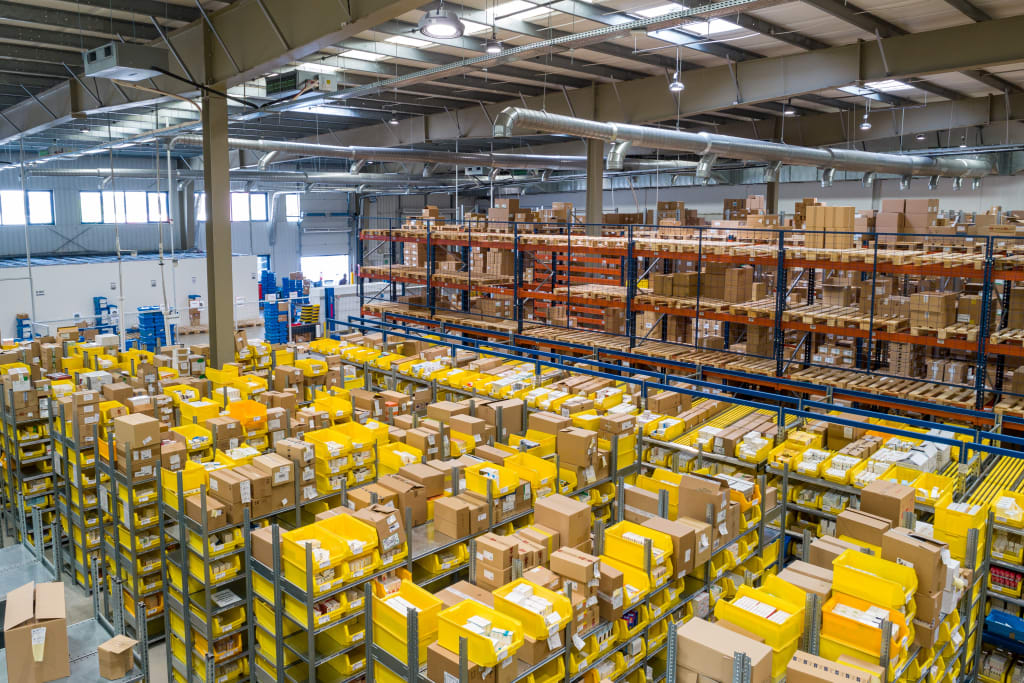IoT in Inventory Management: Advantages and Challenges
The article explores the advantages and challenges faced in implementing IoT in inventory management.

Inventory management is the foundation for any successful enterprise. It plays a central role in balancing the stock levels and ensures that the business has an optimal level of inventory on hand. Inventory management systems help optimize inventory, which enables businesses to manage their capital flow, increase profitability and improve operational efficiency. The integration of developmental technologies like the Internet of Things (IoT) with inventory management systems can provide various advantages to businesses.
In this article, I will discuss the advantages of integrating the Internet of Things (IoT) with inventory management and the challenges that businesses can face in its implementation.
What Is IoT In Inventory Management?
The use of IoT in inventory management refers to the integration of interconnected devices and sensors that can track and manage the storage and movement of inventory. It uses connectivity and enables data analytics that can help gain feedback on the inventory levels across multiple locations.
Advantages Of IoT In Inventory Management
- Create a streamlined supply chain: Tracking inventory is an essential component and plays a transformative role in logistics and supply chain management. The use of GPS and radio frequency ID (RFID) in ioT sensors and devices, enables real-time tracking of goods, by continuous monitoring of shipments, including shipment location and condition in transit. This visibility helps improve the delivery of goods and also enhances decision-making and forecasting accuracy. IoT sensors and devices can also be used to monitor storage conditions, enabling businesses to respond to any unwanted changes. IoT brings about a revolutionary change in supply chain management that helps reduce delays and leads to cost savings and customer satisfaction.
- Warehouse management: IoT strengthens warehouse management by automating tasks like product tracking, storage and order fulfillment by analyzing the data collected from interconnected sensors and devices. It can provide real-time updates on the inventory levels and item locations within the warehouse. The application of smart shelves also helps reduce errors, thefts, damages and operational costs. Demand forecasting and decision-making become more accurate by integrating AI and ML into the data collected by the IoT sensors.
- Fleet tracking: IoT applications in fleet and inventory tracking are made possible by the use of connected devices that can monitor and track vehicles in real-time. These sensors and devices in fleets can be used to generate optimal routes that can help reduce fuel costs, while in the case of inventory, they can improve delivery and reduce supply delays. The data-driven approach can easily help in the detection of any underutilization and efficiency within the system, enabling the management to make informed decisions for inventory allocation and schedules, resulting in better returns on investments.
- Production monitoring: Integrating IoT makes production monitoring and supervision less challenging, and increases efficiency by constantly tracking machine performance. The sensors and devices help floor managers spot any irregularity in real-time, which in turn helps reduce wastage while controlling production inventory. IoT can be used to control production parameters in real-time to ensure optimal conditions for maximizing output. The steady and uninterrupted data flowing from IoT-based sensors enables the development of algorithms that can reduce the risks of human error while increasing production efficiency.
Challenges In Implementing Iot In Inventory Management
- Affects production process: The use of RFID tags is one of the many concerns and complexities that many businesses face when integrating IoT in their operations. RFID tags used on goods that are under production can affect the manufacturing process and this can be one of the reasons for businesses not to implement IoT.
- Not all products can be scanned: Liquid or metals can potentially be a cause of concern when implementing IoT in inventory management. Scanning through these types of inventory can lead to inaccurate readings. This underlines the difficulty of integrating IoT into the inventory management systems where such products are used.
- Vulnerable to cyberattacks: Like any other software and hardware product, IoT can be targeted. Many businesses may be reluctant to implement IoT because of its vulnerability to cyber-attacks or hacks. But, having said that, there are multiple ways in which businesses can ensure the security of devices that can enable them to implement such cost-saving technologies.
- High cost of equipment: The cost of equipment and sensors is one of the barriers to IoT implementation, and it may not be feasible for all businesses to implement this technology.
Final Words
IoT in inventory management has its advantages and challenges. It offers many useful advantages such as fleet tracking, and warehouse management that can enhance customer service, lead to cost savings, and more, while on the other hand, there are challenges that can stop many businesses from implementing IoT.
But with advances in technology, the future of IoT in inventory management looks promising. In the increasingly digital landscape, businesses stand to gain a lot by implementing such transformative technologies. The potential benefits of IoT far outweigh the challenges and is an investment that businesses should make to optimize their inventories.
About the Creator
Ryan Williamson
A professional & security-oriented programmer having more than 6 years of experience in designing, implementing, testing & supporting mobile apps developed. Being techno geek, I love to read & share about the latest updates in technology.
Enjoyed the story? Support the Creator.
Subscribe for free to receive all their stories in your feed. You could also pledge your support or give them a one-off tip, letting them know you appreciate their work.






Comments
Ryan Williamson is not accepting comments at the moment
Want to show your support? Send them a one-off tip.